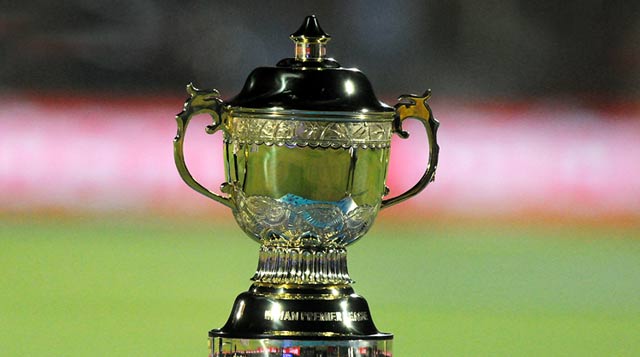I have called it. It is really frustrating to follow Indian cricket team. Too many dawns and too many failures. Too much of hope and too many heartbreaks. All those talk to this being a wonderful team and that the Indian team is on their way to world domination is utter nonsense. At the sametime, it is tough not to follow the team either. It is a catch-22 situation. You know pretty well that they are going to fail. Especially in SENA countries. You know that the batters will not be able to cope with the bounce or the swing. Yet, all of us, the Indian fans, still follow them. Still hope for a miracle. Still expect that one odd win when the team must be dominating. In a sense, it is tough being an Indian cricket team supporter.
Ever since the 1987 World Cup was held in India and the game blossomed after restrictions were relaxed in 1992, expectations have risen sky high. Prior to that, whatever the Indian team was able to achieve, it was considered a bonus. There wasn’t much expectation anyway. The days of Bishen Singh Bedi applauding the batter for every six hit of his bowling is still fresh in the memory. Opposition making merry of the Indian bowlers and the Indian batsmen unable to cope with pace and bounce were a regular feature. As a result even a draw was considered a big achievement. During this period, wins in one day internationals kept the interest going. There were far too many 3 nations, 4 nations tournament, mostly held in India. India won most of them and it sort of kept the fans engaged.
Two halves
The Indian cricketing history can be split into two halves. Before and After. Before liberalisation and after liberalisation because before liberalisation, wins were more or less non-existent. Whatever was achieved was a bonus. However, after liberalisation, when the big bucks started to pour into the game, expectations rose only to be belied time and again. Let me get into a bit of the pre-liberalisation period to understand the magnitude of the frustration that we the fans have to endure everytime India tours.
Before liberalisation, that is before 1991
Indian cricket and the fans went with the flow. Any victory, in India is welcome. Any victory outside India was something unexpected. It was treated as an aberration. It was termed fluke or the opposition were extremely weak. Mind you, India started to play the game in 1932 and not for the next 30 years did we manage to win our very first test. After New Zealand, India was the slowest to record our first test victory. Every other team recorded their first test win within 10-15 years of playing the game. It took a further 15 years for India to record their first overseas series win in 1967 in New Zealand.
Granted that test series during that period wasn’t as frequent as now. India hardly played 5-7 tests a year unlike now when 12-13 is the norm. Teams like Australia, England and New Zealand simply refused to tour India because of their preconceived perceptions. Nonetheless, it took a very long time for India to establish themselves as a cricketing nation. Blackwash, whitewash and any other wash was pretty regular. The number of games that India lost to England, Australia and West Indies was mindboggling. There was absolutely no quality in the ranks of the Indian team save for a couple of individuals.
I can only imagine the state of mind of the supporters of that era. They must have been frustrated to the core. Not because of lack of results but because of lack of application. Lack of anything and everything. Yet, Indian cricket endured.
Change of fortune, for the better
There was a glimmer of hope towards the start of the 1970s. Suddenly, out of the blue, India won 2 consecutive test series. In the West Indies and England. This was unprecedented. Now that I come to think of it, this has not been achieved even during the current period. India does not have a record of winning 2 consecutive series outside India. This is shocking. They have won one but it was usually followed by heavy defeats. Nevertheless, these wins heralded a new awakening. Not that India became world beaters. Far from it. Nonetheless, India started to win at the least, one test in almost every series that was played in India. Wins outside India still proved elusive. Never mind that but it was progress, albeit, 50 years after starting to play the game.
Things started to improve much faster with the unearthing of players of the calibre of Gavaskar, Kapil Dev, Vishwanath, Bedi, Chandrasekhar, Prasanna & Venkatraghavan. There must surely have been a huge reception for the team when they won a couple of tests in Australia in 1979 and the Kapil Dev inspired win at Melbourne in 1982 that helped to draw the series in Australia. It was a significant achievement. Winning and squaring the series in Australia was and is always considered an excellent achievement. Not for nothing is Australia known as the trendsetters when it comes to the game. They are the only team in history to have had a positive record against the West Indies when the team from the islands were ruling the world.
Unable to win outside
The fact that these are still remembered shows the paucity of results even after all these years. Never once was India considered a world class team despite the sizeable population. Indian cricket supporters were always looking for series wins in England, Australia, New Zealand and during those times, West Indies. With the exception of New Zealand, the rest were deemed impossible. After the 1971 win, it took India another 15 years to win another series in England and a further 21 years to win there again. The same can be said about Australia and England too because they took more than 30 years and 25 years between their wins in India but that will be missing the point. India with its population and cricketing base was always expected to dominate but the team failed.
The 1983 World Cup win
Against all odds, India won the 1983 World Cup defeating the mighty West Indies in the finals. They followed it up with another World Championship win 1985. Two significant wins albeit in the shorter format. These events proved a catalyst for change. More people started to play the game, follow the game and the team. I myself developed a liking for the game after the 1983 win. As a result, the cricketing base expanded even further. 1987 World Cup and the subsequent liberalisation brought huge funds into the game. Cricket stars became overnight millionaires.
This leads me to the next part of the story.
Other articles about Indian team can be read here, here and here.



